In our increasingly tech-driven world, digital literacy has become essential for navigating everything from jobs, to basic services and communication. However, the idea of computer classes can feel intimidating or boring. Fortunately, through regular entertainment, social sharing and information gathering we’re naturally given the opportunity to gradually build digital skills without even realising it. A phenomenon that’s being coined ‘digital on the sly’.
Stealth learning through social media
Social platforms are one of the most common ways people indirectly develop their digital skills. Using apps like Facebook, Twitter, Instagram, and TikTok requires an understanding of account setup, post creation, multimedia uploads, tagging others, and generally getting comfortable with using a mobile device.
While some social media users may still be nervous about using tech, their level of comfort naturally grows through regular posting, sharing, commenting, and browsing feeds. Grandparents messaging grandkids via WhatsApp or iPhone Facetime are examples of building mobile skills.
Similarly, buying and selling using online marketplaces such as eBay, Amazon and Vinted, allows users to become at ease with creating listings and learning skills through use of image uploads, templated forms, menus and buttons. Before you know it, attaching electronic files, writing subject lines, and communicating digitally become second nature.
Digital confidence through entertainment
Online gaming, streaming video and music services, and even casual internet browsing all build technical ability over time.
While someone may start off just wanting to watch videos, the need to create profiles or playlists, searching and filtering by genre, rating shows, and adjusting quality settings, slowly builds the confidence and capability of users.
Even casually searching the web involves a user interacting with search suggestions and features, assessing website credibility, controlling browser windows and tabs, and getting comfortable with scrolling, clicking, zooming, and typing queries. These micro-online behaviours lay an unconscious foundation for digital literacy that leads to ongoing skills growth.
Indirect IT skills through information seeking
People will often turn to the internet for finding practical information or completing transactions like online shopping, banking, travel bookings, accessing government resources and more. Completing these tasks requires learning by doing, as users navigate through the process and build digital skills along the way.
Comparing product features and prices across online retailers hones abilities like product filtering, reviews analysis, checking inventory, redeeming digital promotions, and calculating digital shopping carts. Many useful consumer skills are indirectly picked up during interactions not expressly focused on “learning about technology”.
Embedding digital skills in community life
Many community programs and civic services now utilise a “digital delivery” model that encourages people to go online and therefore build their IT skills as a by-product.
Public libraries offering e-book lending and online learning resources unintentionally introduce digital skills like navigating website menus, signing up for accounts, borrowing materials digitally, connecting devices, and even requesting assistance digitally via chat or messaging tools.
Local councils increasingly rely on online portals for tasks like booking fitness class schedules, renewing parking permits, reporting service issues, and finding area event listings. These internet-enabled services double as springboards for slowly advancing abilities like inputting data accurately, navigating browser windows, or uploading and attaching digital files.
Ultimately, developing digital skills occurs most successfully for many people when they don’t realise they’re getting a lesson in tech. Skills build over time rather than rigidly structured classes. By embedding technology into ordinary tasks and community touchpoints, being online becomes second nature. The path to tech confidence lies in feeling the freedom to click around, make mistakes, and organically develop competence “on the sly.”
